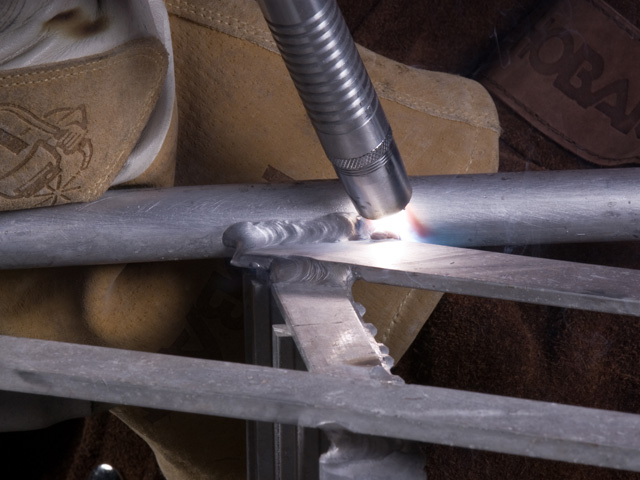14 Welding Tricks to Aluminum Repairs
Here Are Expert Tips to Make the Best Aluminum Welds
Repairing aluminum presents challenges steel repairs don't. Key differences in aluminum repairs include preparation, heat and welding speed.
Our welding consultant, Joel Ort of Hortonville, Wisconsin, offered the following tips while he fixed an aluminum stepladder.
-- Clean aluminum with a stainless-steel brush. A steel brush contaminates the metal by forcing impurities into the metal and weakening the weld.
-- Move the brush in one direction. Do not use a lot of down pressure. That smears the aluminum.
-- Use a non-hydrocarbon degreaser to remove oil and solvents from the repair surface.
-- Determine the base material of the repair area. Aluminum varies by the amount of silicone it contains. Knowing the base metal points you to the correct filler wire. One way to determine the base metal is to contact the manufacturer of the piece being repaired.
P[L1] D[0x0] M[300x250] OOP[F] ADUNIT[] T[]
-- Metal inert gas (MIG) welding on aluminum is best done within a spray transfer mode. This smooths the transfer of the filler material. Spray transfer is named for the spray of tiny molten droplets across the arc. Spray transfer is usually smaller than the diameter of the wire and uses relatively high voltage and wire feed speeds or amperage.
-- Avoid "weaving" when repairing aluminum. Weaving is a back-and-forth technique used to weld steel. On aluminum, this increases the odds of burn-through.
-- Heat dissipates quickly into aluminum. A "hot-start" function on a welder makes a better weld. You can preheat the repair area with a torch.
-- The thermal conductivity of aluminum requires hotter amperage and voltage settings.
-- Your welding speed should be quick to avoid burn-through.
-- Make the gap to be repaired as small as possible.
-- Push the gun away from the weld puddle.
-- Practice your weld on scrap aluminum of the same thickness to find your welder's proper setting.
-- If you don't have a separate gun, instead use a separate gun liner.
-- The grounding clamp should be secured to an area free of paint and other contaminants.
Dan Miller can be reached at dan.miller@dtn.com
Follow him on Twitter @DMillerPF
(c) Copyright 2021 DTN, LLC. All rights reserved.




